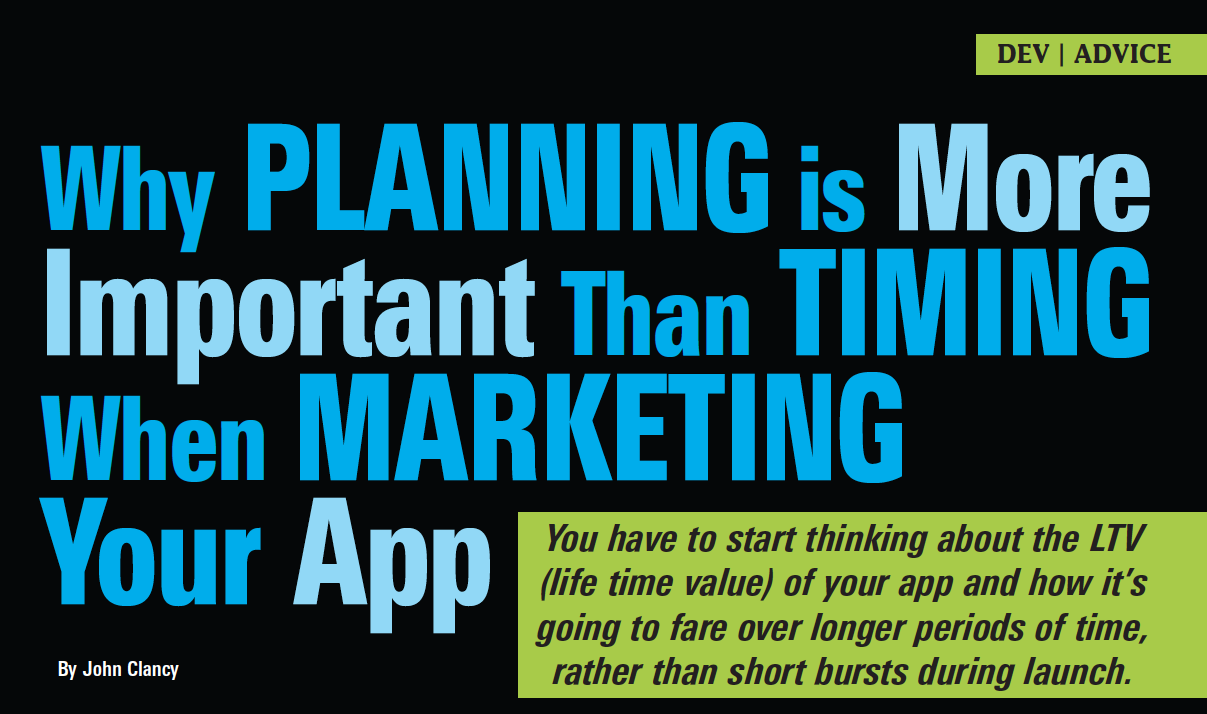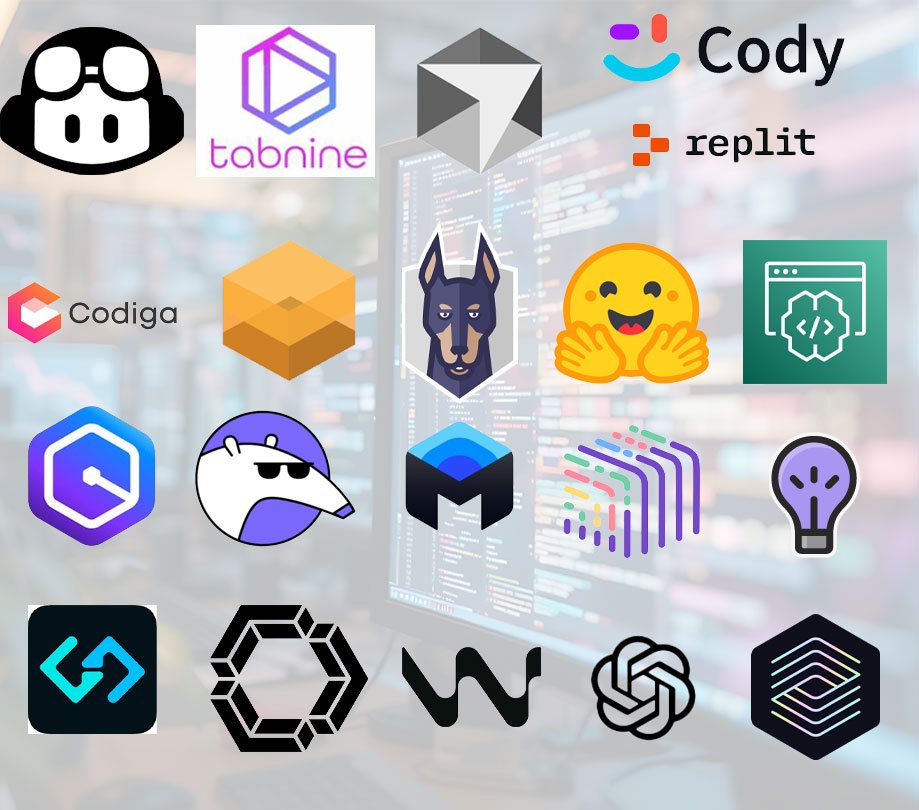Marketing & Promotion
Why Planning is More Important Than Timing When Marketing Your App
Wednesday, January 1, 2014

|
John Clancy |

You have to start thinking about the LTV (life time value) of your app and how it’s going to fare over longer periods of time, rather than short bursts during launch.
You did everything you thought you should to promote your app. You built a pre-launch website, collected email addresses of enthusiastic fans, filmed a killer explainer video, tweeted, posted and talked up your app on the most active forums and blogs. All of your efforts are paying off and downloads are brisk but what happens when the tide turns and interest in your app wanes? How do you know when it’s time to invest more money or resources in additional promotional activities?
Well, the truth of the matter is, there’s no “one size fits all” answer here. Basically, it all comes down to planning or better yet, long-term planning. You have to start thinking about the LTV (life time value) of your app and how it’s going to fare over longer periods of time, rather than short bursts during launch.
You see, when you launched your app, you effectively created a business. But to make any business sustainable, you need to go beyond a simple marketing plan and prepare for eventualities that could impact your bottom line such as poor reviews, bugs and crashes, media backlashes or any other potentially negative (or positive) impact on your app sales.
A well-defined strategy will help you reduce the chance of watching your app – and your business – sink into obscurity. Integral to that plan are three key issues that should be addressed.
1. Customer Care & Support
A good customer support plan will help you to put all of the essential building blocks in place to create a customer-centric culture; one that allows you to build customer loyalty, encourage repeat business and ensure positive word of mouth. All of which will help reduce marketing and operational costs while improving acquisition and retention rates. Ultimately, the goal is to stem the tide of customer attrition by ensuring that your customers feel satisfied at all stages of their relationship with your company and its app. Remember, it’s cheaper – and more profitable – to keep a customer than it is to find a new one.
2. Engagement & Retention
Persuading customers to download your app is the easy part. Getting them to actually stick around is substantially more difficult. That’s where your engagement and retention strategy comes into play. Push notifications, cross-selling, up-selling, incentive plans, loyalty plans and 360-degree feedback programs are all initiatives that will help you build a sustainable app business. The goal is to create an always-on connection with your customers to ensure that your app has a permanent spot on their mobile desktop. By building a community of followers and influencers, you essentially create a sounding board that you can tap into to whenever you need feedback or wish to gauge customer satisfaction levels. And just as important, you exponentially enhance your ability to monetize your app beyond the initial sale or download.
3. Advertising & Promotion
A well-defined advertising & promotion strategy will ensure that you target the right message, to the right audience, at the right time using the most appropriate medium. The initial focus of your advertising campaign should be to drive downloads and to complement your other promotional activities with the goal of pushing your app up the charts. Once you achieve a high ranking and have search visibility, paid advertising can then be scaled back to a maintenance level as other “organic” or low cost tactics (e.g. your engagement strategy) ramp up to support continued awareness, downloads and repeat usage. Once that momentum dies, more aggressive advertising and promotional activities can again be reinstated to boost acquisition numbers. Remember though, every app is different and market conditions will often dictate timing, steps and strategy, so use as much available data as possible to make important and potentially costly decisions.
To help you evaluate if your app has a healthy business strategy, ask yourself the following questions.
- When was the app last updated?
- Are you watching the analytics of your app?
- When was the last time you communicated with users (push, email, etc).
- Does your app target more than one device?
- Do you have a roadmap for adding levels, or features into your app?
I could continue on with many more evaluation questions but the point is you have to be constantly evaluating your app if you want it to succeed. You have to think of your app as a store in it-self, that users will be passing through on a daily basis. You don’t want those users to just pass through and never return.
As you build your app business, make sure that you know what factors impact your success and concentrate on those elements. If you maintain a focus on maximizing your installs while retaining and monetizing your customers, you’ll succeed over the long run.
But keep in mind that it requires effort, continued investment, commitment and frequent evaluation to build an app with staying power. The good news is that if you proactively define what success looks like, choose the actions that are right for you and follow a well-defined plan, you’ll be in a stronger position to respond to market conditions and grow your app business.
This content is made possible by a guest author, or sponsor; it is not written by and does not necessarily reflect the views of App Developer Magazine's editorial staff.

Become a subscriber of App Developer Magazine for just $5.99 a month and take advantage of all these perks.
MEMBERS GET ACCESS TO
- - Exclusive content from leaders in the industry
- - Q&A articles from industry leaders
- - Tips and tricks from the most successful developers weekly
- - Monthly issues, including all 90+ back-issues since 2012
- - Event discounts and early-bird signups
- - Gain insight from top achievers in the app store
- - Learn what tools to use, what SDK's to use, and more
Subscribe here











Comments